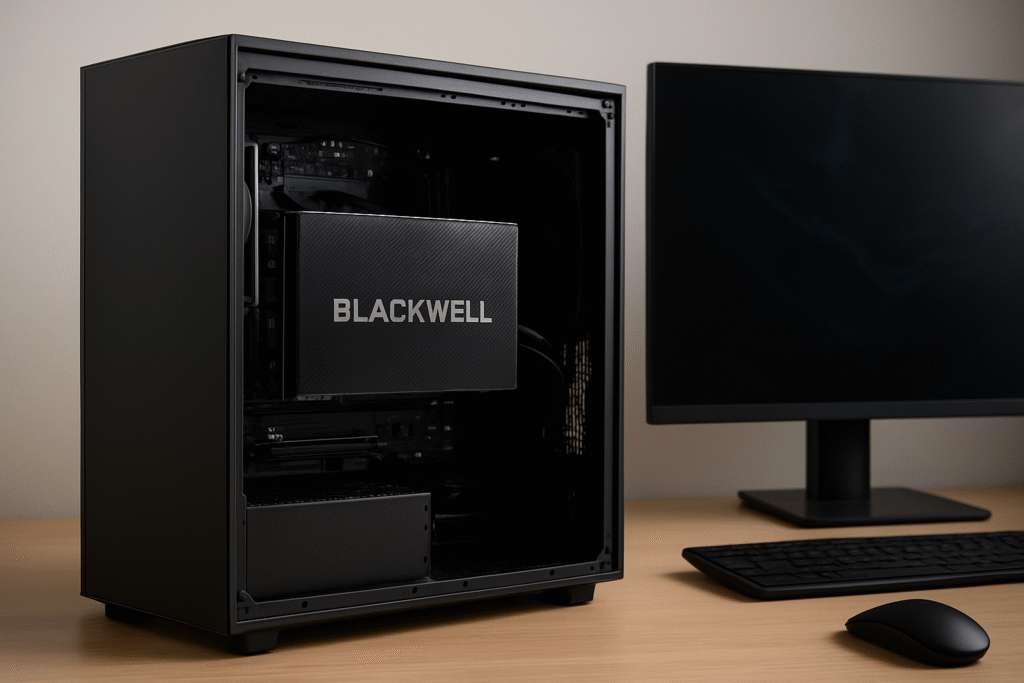Sometimes, innovation isn’t just about building bigger systems in the cloud it’s about empowering creators to bring the future closer to their own desks. That’s exactly what venture capital giant A16z has set out to do with its new AI workstation powered by NVIDIA’s cutting edge Blackwell GPUs.
Designed for developers, researchers, and builders who demand more than traditional setups can deliver, this workstation promises local speed, unmatched flexibility, and the kind of privacy cloud solutions often struggle to guarantee.
The rise of foundation models and large datasets has changed the rules of the game. While cloud services from giants like AWS, Google Cloud, and Microsoft Azure offer scalability, they come with recurring costs, latency, and security trade offs. Many AI researchers and startups are looking for alternatives that provide full control of resources.
This is where the AI workstation stands out. By bringing NVIDIA’s Blackwell GPUs directly into local environments, A16z bridges the gap between cloud convenience and on-premise performance.
According to A16z, this machine is tailored for those who want to prototype faster, fine tune large models without bandwidth limitations, and ensure sensitive data never leaves their labs.
The Power of NVIDIA Blackwell GPUs
NVIDIA’s Blackwell architecture has been hailed as a revolution for AI computing. These GPUs offer groundbreaking memory bandwidth, energy efficiency, and accelerated performance designed for training and inference of next generation foundation models.
Dr. Linh Hoang, an AI systems expert at Stanford, explained, The Blackwell GPU is a leap forward. It’s not just about raw power it’s about enabling researchers to iterate more quickly and efficiently. When combined with a robust AI workstation, this becomes a gamebchanger for small labs and startups.
Consider the story of NovaGen Labs, a biotech startup working on protein folding simulations. Initially reliant on cloud GPU clusters, they faced frequent downtime and escalating costs.
When offered early access to A16z’s AI workstation, NovaGen reported a 45% reduction in training time for their protein prediction models. More importantly, their sensitive biomedical data remained within their secure facilities.
Switching to an on premise workstation changed everything. Our experiments no longer wait for cloud queue times, and the privacy benefits are invaluable. For startups like us, control equals speed.
The Privacy and Security Advantage
One of the most compelling aspects of this move is data sovereignty. In industries like healthcare, defense, and finance, keeping sensitive datasets local is not optional it’s mandatory. An AI workstation ensures that sensitive information never crosses the boundaries of a company’s own servers.
Data scientist Maria Lopez, who works in financial modeling, reflected on her experience, We deal with proprietary trading algorithms and datasets that can’t risk exposure. Cloud AI tools are powerful, but they always carry a degree of vulnerability.
Having a workstation that matches the cloud’s muscle but keeps data in house gives us unmatched peace of mind. The debate between cloud first and local first AI infrastructure is heating up. Some argue that the future is hybrid, blending the best of both.
According to Jason Patel, CTO of an AI consultancy firm, Cloud will remain dominant for distributed workloads, but local AI workstations are rising as the secret weapon for innovation.
They allow researchers to work independently, experiment without recurring costs, and only scale to the cloud when necessary.
This hybrid approach means A16z’s workstation doesn’t replace the cloud it complements it. Developers can fine tune models locally and later deploy them at scale via cloud resources.
I spoke with Ravi Sharma, an independent AI researcher who recently tested an NVIDIA Blackwell GPU powered workstation. He shared how the experience transformed his workflow. I used to spend hours syncing datasets between my local machine and the cloud.
With this workstation, training runs start instantly. There’s no lag, no delay, no compromises. It feels like the machine disappears and I’m directly interacting with the model. For Ravi, the AI workstation not only saved time but reignited his passion for experimentation. It feels like freedom, he said.
The Broader Implications for AI Development
The launch of A16z’s workstation signals a shift in how we think about AI infrastructure. For years, the narrative was, Go cloud or go home. Now, the equation is evolving. The workstation reintroduces autonomy for researchers, creators, and enterprises.
This shift could democratize AI innovation. Smaller teams without massive cloud budgets can now compete on more equal footing, thanks to powerful local machines.
While the AI workstation brings undeniable benefits, challenges remain. Cost is a factor NVIDIA’s Blackwell GPUs are premium products, and initial investment for a workstation will be significant. Maintenance and cooling requirements may also prove demanding.
However, as with many disruptive technologies, early adopters often pave the way for wider adoption. Over time, prices typically normalize, and ecosystems evolve to support new workflows.
Industry watchers believe we’re seeing the beginning of a trend where local and cloud AI infrastructures coexist, creating a more flexible and resilient ecosystem.
A New Era of Local AI Power
A16z’s unveiling of its ultra powerful AI workstation with NVIDIA Blackwell GPUs represents more than just another hardware release. It’s a reimagining of how AI builders can access power, privacy, and flexibility without sacrificing speed.
From startups like NovaGen Labs accelerating biotech breakthroughs, to independent researchers like Ravi Sharma rediscovering creative freedom, the workstation is poised to redefine the AI development landscape.
As cloud and local infrastructures continue to converge, one thing is clear the next wave of AI innovation may very well begin not in a data center but on a desk.

